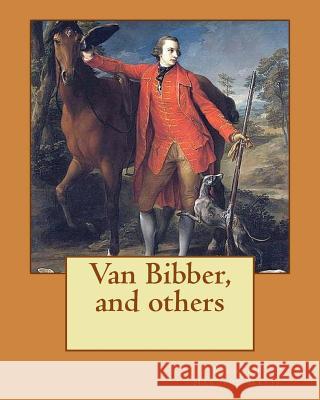Van Bibber, and others. By: Richard Harding Davis (illustrated): novel » książka
Van Bibber, and others. By: Richard Harding Davis (illustrated): novel
ISBN-13: 9781541317970 / Angielski / Miękka / 2016 / 88 str.
Van Bibber, and others. By: Richard Harding Davis (illustrated): novel
ISBN-13: 9781541317970 / Angielski / Miękka / 2016 / 88 str.
(netto: 39,16 VAT: 5%)
Najniższa cena z 30 dni: 38,17 zł
ok. 13-18 dni roboczych.
Darmowa dostawa!
Van Bibber and Others, by Richard Harding Davis (1890), is a collection of short stories that appeared originally in the magazines. The central figure in the majority of them is Van Bibber, a young New Yorker of the mythical "Four Hundred," a charming fellow, combining the exquisiteness of the aristocrat with the sterling virtues of the great American people. His tact is consummate, his ideals of good form unimpeachable, his snobbery entirely well-bred. Having plenty of money, and nothing to do but to be "about town," he is in the way of adventures. Some of these are funny; one or two are pathetic. They all serve to throw high light upon Van Bibber in his character of a swell. The stories are well written, and show the author's equal acquaintance with Fifth Avenue and with the East Side.... Richard Harding Davis (April 18, 1864 - April 11, 1916) was an American journalist and writer of fiction and drama, known foremost as the first American war correspondent to cover the Spanish-American War, the Second Boer War, and the First World War. 1] His writing greatly assisted the political career of Theodore Roosevelt and he also played a major role in the evolution of the American magazine. His influence extended to the world of fashion and he is credited with making the clean-shaven look popular among men at the turn of the 20th century. Davis was born on April 18, 1864 in Philadelphia, Pennsylvania.His mother Rebecca Harding Davis was a prominent writer in her day. His father, Lemuel Clarke Davis, was himself a journalist and edited the Philadelphia Public Ledger. As a young man, Davis attended the Episcopal Academy. In 1882, after an unhappy year at Swarthmore College, Davis transferred to Lehigh University, where his uncle, H. Wilson Harding, was a professor.While at Lehigh, Davis published his first book, The Adventures of My Freshman (1884), a collection of short stories. Many of the stories had originally appeared in the student magazine the Lehigh Burr. In 1885, Davis transferred to Johns Hopkins University. After college, his father helped him gain his first position as a journalist at the Philadelphia Record but he was soon dismissed. After another brief position at the Philadelphia Press, Davis accepted a better-paying position at the New York Evening Sun where he gained attention for his flamboyant style and his writing on controversial subjects such as abortion, suicide and execution.He first attracted attention in May to June 1889, by reporting on the devastation of Johnstown, Pennsylvania, following the infamous flood and added to his reputation by reporting on other noteworthy events such as the first electrocution of a criminal (the execution of William Kemmler in 1890). Davis became a managing editor of Harper's Weekly, and was one of the world's leading war correspondents at the time of the Second Boer War in South Africa. As an American, he had the opportunity to see the war first-hand from both the British and Boer perspectives. Davis also worked as a reporter for the New York Herald, The Times, and Scribner's Magazine. He was popular among a number of leading writers of his time, and is considered the model for illustrator Charles Dana Gibson's dashing Gibson man, the male equivalent of his famous Gibson Girl. He is also mentioned early in Sinclair Lewis's book Dodsworth as the example of an exciting, adventure-seeking legitimate hero....











